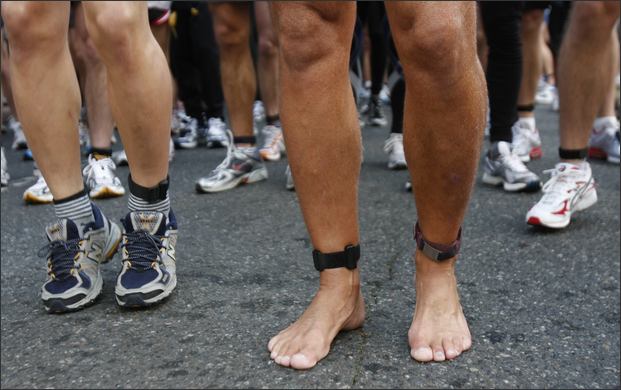Who doesn’t want to run like a Kenyan? The speed, endurance, and efficiency of these elite distance runners is the stuff of legend, and those in the running community have tried to glean some insight as to what makes these African runners such a powerful force in marathon running. One of the obvious starting points is to analyze the biomechanics of the running stride and see if there are efficiencies inherent to the Kenyan athlete.
Of course, this has been done with more than one researcher noting one glaring observation: Kenyan runners do not wear shoes. They grow up, play, and often train barefoot. Could this be the secret to running faster? Certainly, some people think that it is. The barefoot running trend has gained a steady following over the past few years. But as the barefoot running contingent has grown, so have its detractors. Let’s take a closer look.

Advantages of Barefoot Running
First of all, most barefoot runners do not run in their bare feet. Even the fanatics realize that the roads and trails contain many hazards such as broken glass, nails and rocks that could cause potential injury or discomfort to the feet.
Instead, they use minimalist running shoes, a type of sneaker designed to mimic the barefoot condition in terms of biomechanics. Typically, these shoes are lightweight and feature a thin sole without the large heel cushion found in traditional running shoes.
Biomechanically, the research has shown that barefoot running eliminates or minimizes the heel strike during running. The runner attempts to absorb the impact of body weight by landing with the foot flat or slightly on the ball of the foot. This allows the lower leg and foot to distribute the body weight over a larger surface area. The heel strike found in those wearing traditional running shoes, called shod runners, creates a condition where the full force of impact is driven through the heel, and ultimately the heel cushion of the shoe.
Proponents of barefoot running claim reduced injuries as a result of this change, although there is not much research available to support this claim. One claim that does seem to be supported in the medical literature however, is that of reduced energy consumption while running barefoot.
Simply put, barefoot runners should not fatigue as quickly as shod runners. This would be a great advantage to distance runners and racers who want to attain peak performance or even achieve a personal best during local road races.
The finding is interesting as stride frequency and mechanical work were higher in barefoot runners, indicators which would lead one to believe that the runner would consume more energy. However, the cushioning material in a running shoe absorbs a considerable amount of energy in the shod runner. Energy that would otherwise be used to propel the runner forward is lost in the sneaker. Think of the traditional running shoe like a Cadillac. It gives a smooth ride, but not too efficient.
Disadvantages of Barefoot Running
The obvious risks associated with barefoot running such as puncture wounds can be mitigated with the use of a minimalist running shoe. With this type of footwear, much of the biomechanical adaptations which proponents claim as advantageous are maintained, i.e. reduced heel strike and improved efficiency.
However, there are other reasons why someone may not want to run barefoot. Without a traditional running shoe, the runner lands with a flat foot instead of the traditional heel strike seen in shod runners. This increases the pressure on the bones of the forefoot, which are quite a bit more fragile than the heel.
Over time and with high mileage, a runner could develop a stress fracture, a small break in one of the forefoot bones. This would sideline a runner for several weeks at best, and could become more severe if ignored. Proponents claim that barefoot running is more natural and that we as humans evolved in a way that makes the barefoot method more efficient. But cavemen rarely put in thirty plus miles per week.
The bottom line is that there has not been enough research performed to advocate one method or the other. More studies need to be conducted, and we need to be open-minded about the results. With the barefoot trend steadily gaining a following, the research is sure to follow.
In the meantime, let’s go back to our elite Kenyan marathoners. In an environment where every conceivable advantage is sought and analyzed, these athletes all wear running shoes in competition. Maybe shod running is biomechanically advantageous, or maybe the cumulative effect of pavement on flesh for 26.2 miles eliminates the inherent advantage of running barefoot.
Dr. Mark Reed is an orthopedic surgeon specializing in foot and ankle surgery in the Seattle metro area. He can address all of your questions regarding barefoot running as well as any other foot and ankle conditions.



